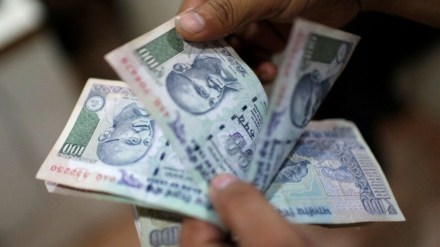India’s retail inflation, based on the Consumer Price Index (CPI), fell to a 12-month low of 4.75% in May from 4.83% in April, mainly due to the high base effect and easing food prices, data released by the National Statistical Office (NSO) showed on Wednesday.
Food inflation during May decreased marginally to 8.69% from 8.70% in April. The drop in inflation was witnessed in spices, meat and fish, sugar, milk and products, and even vegetables, though slightly.
On a sequential basis, the overall index rose 0.5% on month. Typically, the CPI rises sequentially in May, but this year the month-on-month rise has been slightly lower.
Core inflation, meanwhile, eased to a series-low of 3.1% in May from 3.2% in April. The moderation was largely a consequence of low housing inflation, which ebbed to 2.56% in May, the lowest level since at least 2014.
“Core inflation was benign, but is expected to bottom out around mid-year and trend gradually higher thereafter,” said Radhika Rao, senior economist, DBS Bank.
Economists say a softer-than-expected inflation backed by dip in core inflation suggests that price pressures this year will be more subdued than RBI forecast (4.5% for FY25).
“The change in stance could happen in the next two monetary policy meetings, and that could be followed by a rate cut potentially in December but more likely in February,” said Abhishek Upadhyay, senior economist, ICICI Securities Primary Dealership.
May internals showed that the index of all major food subgroups rose during the month, barring spices. The index of vegetables, egg, meat and fish, rose 3.2%, 2.6%, and 1.5%, respectively during the month; while that of cereals remained unchanged, oils and fats inched up 0.1% and spices declined by 0.9%.
The present heatwave has taken a toll on vegetable supplies with prices of potatoes, tomatoes and onions rising which will continue for another month or two, say economists.
On the core front, its components have been showing benign signs, note economists. The two exceptions (within core) are personal care products which have witnessed inflation of 7.7% mainly due to the companies increasing their MRPs, and the other is health where both service providers and pharma companies have increased prices.
Madan Sabnavis, chief economist, Bank of Baroda said that future inflation numbers will be driven by base effects, especially from July onwards. “One should recognize that there is no new crop of pulses coming in before October and hence typically prices would move up until they come in,” he said. Sabavnis expects headline rate to fall to the 4% mark by September.
